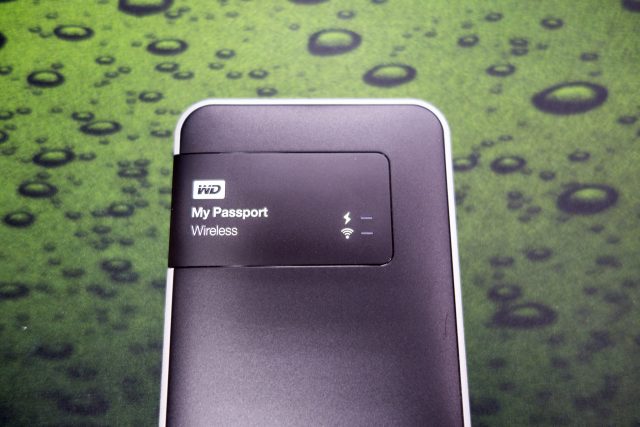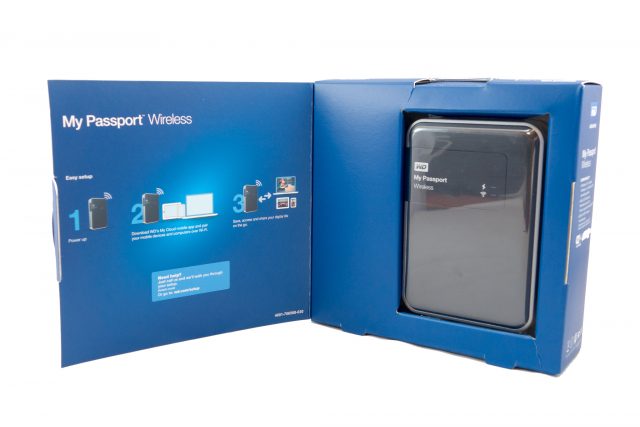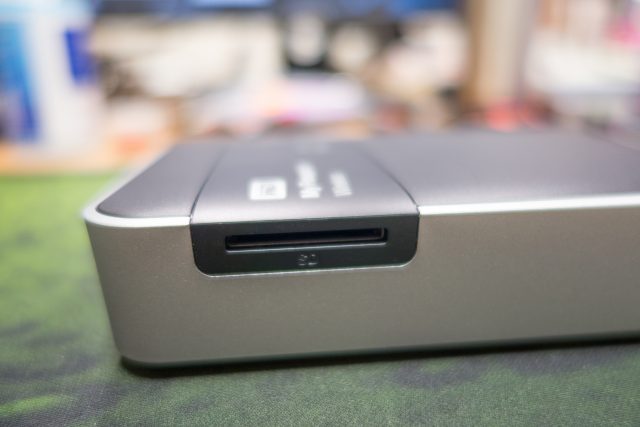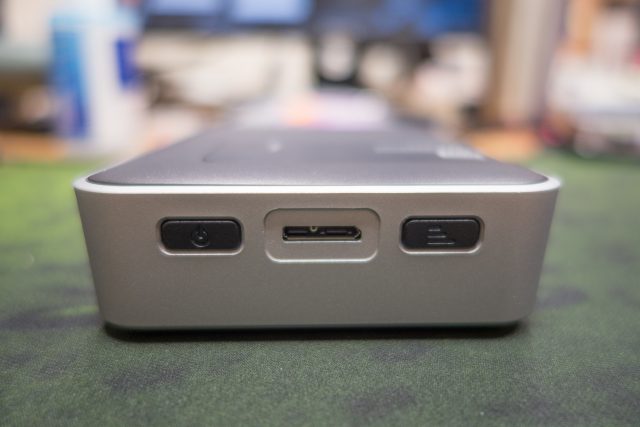 Western Digital launched last month a new addition to their line of My Passport portable storage solutions, the My Passport Wireless. The My Passport Wireless is not only a portable hard disk drive, but also a mobile wireless drive with an integrated SD card slot, making it possibly the most versatile mobile storage solution at this time.
Western Digital launched last month a new addition to their line of My Passport portable storage solutions, the My Passport Wireless. The My Passport Wireless is not only a portable hard disk drive, but also a mobile wireless drive with an integrated SD card slot, making it possibly the most versatile mobile storage solution at this time.
Apart from functioning like other USB bus-powered portable hard disk drive, the My Passport Wireless also features 802.11n Wi-Fi networking capabilities and can be self-powered with its built-in battery. With storage served over Wi-Fi, the My Passport Wireless can connect multiple devices simultaneously, allowing it to function as a network storage server in the field.
The My Passport Wireless comes in storage capacities of 1TB and 2TB. I have the 2TB version for review here. It’s 3400mAh battery is rated to provide 6 hours of streaming and 20 hours of standby time.
Western Digital offers both Android and iOS client apps for connecting to the My Passport Wireless. On desktops or notebooks, you can access the My Passport Wireless through a web browser or native network shares.
The My Passport Wireless comes with a USB wall charger rated at 2A output. The charger has a US 2-pin plug built into it, but a UK 3-pin (i.e. Singapore type) adapter and Australian 2-pin adapter are also included. The two adapters slide in over the US 2-pin prongs. A USB to Micro USB 3.0 cable is also included.
Exteriorly the My Passport Wireless looks like an oversized brethren of other My Passport drives.
 The face of the My Passport Wireless has a panel with two indicator LEDs. One indicator is for power status, and the other is for wireless network status. The LEDs are multi-coloured to indicated different things. Sometimes, unfortunately, the colours may not be altogether very obvious. For example, the power indicator can be used to indicate battery charge level, with four colours from blue, green, orange and red designating various degrees of charge level (highest to lowest). I found myself having to refer to the manual several times because I couldn’t remember the meanings of the colours.
The face of the My Passport Wireless has a panel with two indicator LEDs. One indicator is for power status, and the other is for wireless network status. The LEDs are multi-coloured to indicated different things. Sometimes, unfortunately, the colours may not be altogether very obvious. For example, the power indicator can be used to indicate battery charge level, with four colours from blue, green, orange and red designating various degrees of charge level (highest to lowest). I found myself having to refer to the manual several times because I couldn’t remember the meanings of the colours.
The SD card slot is on one side of the My Passport Wireless.
Photographers in the field may find this SD card reader quite useful, because the My Passport Wireless can copy photos from the SD card into its own drive, even automatically if you so configure it to. Once in the My Passport Wireless drive, the photos can immediately be accessible wirelessly.
At the top end of the My Passport Wireless, you’ll find two buttons and a Micro USB port. If you connect the My Passport Wireless to a computer through USB, it will function as a regular portable hard disk, unless you configure the drive to be “locked”. When locked, your computer will not see the My Passport Wireless.
The USB connection will be used for powering the My Passport Wireless and also to recharge its built-in battery.
The two buttons are for power and WPS. The WPS button is really a multi-function button, and apart from starting WPS, it can also select a network connection mode, and to initiate SD card transfer function.
The web interface of the My Passport Wireless is easy to use, navigate around, and perfectly functional. The web access is used to manage the device itself.
Files on the My Passport Wireless are accessed through a regular network share on your desktop or notebook computer.
Mobile devices have a dedicated native client, WD My Cloud, available for both Android and iOS on their respective app stores. I’m an Android user, so I’ll talk about the Android client specifically in this review.
You can easily access all the content in the My Passport Wireless via the WD My Cloud app. It has its own photo viewer and music player, but requires another app to play videos.
The WD My Cloud app tries to be very versatile, adding support for cloud storage services like Dropbox, Google Drive, OneDrive, and Western Digital’s own MyCloud. This enables you to access your various cloud storage services and your My Passport Wireless (possibly multiples of them) from within the same app.
I did have trouble trying to upload content from my mobile phone to the My Passport Wireless. Unfortunately, the WD My Cloud is not altogether intuitive in this regard. If I start from the WD My Cloud app, I can choose photos, videos or music to upload. I was trying to upload some screenshot images, and those could not be selected. When I start from the Android Gallery app, I can share the files with the WD My Cloud app, but the files just get deposited into a “Download” page, which doesn’t seem to actually move the file into the wireless drive. It was only through a tip from the WD Community forum that I understood that the files needed to be selected again in the Download page, then then click on the Copy icon to actually begin the wireless upload (see last screenshot above).
Some iPhone-totting friends have remarked to me different, though equally unintuitive, issues with using the WD My Cloud app on the iOS platform.
As a portable hard disk drive, the My Passport Wireless performance isn’t top league. The My Passport Ultra Anniversary Edition I reviewed recently comfortably outperformed the My Passport Wireless in Bonnie++ benchmark tests.
| My Passport Wireless 2TB | My Passport Ultra Anniversary Edition 2TB | |
|---|---|---|
| Sequential Write (MB/s) | 61 | 102 |
| Sequential Rewrite (MB/s) | 24 | 45 |
| Sequential Read (MB/s) | 94 | 106 |
| Random Seeks per second | 109 | 130 |
Western Digital is a little late in the mobile wireless drive party. The My Passport Wireless does offer plenty of useful features for mobile users who need to share content across multiple devices, such as photographers in the field.
The My Passport Wireless retail price is S$299 and S$399 for the 1TB and 2TB capacities respectively.
Conclusion
The Western Digital My Passport Wireless is adds on useful mobile wireless features to a great portable hard disk drive, convenient for mobile users who need to share files among multiple devices or other fellow users.
Pros:
- Integrated SD card slot
- Wi-Fi connection with hotspot and home mode is pretty useful
- Lightweight
Cons:
- WD My Cloud app needs some usability improvements
- Average performance as a portable hard disk
- Average battery life






View Comment Policy